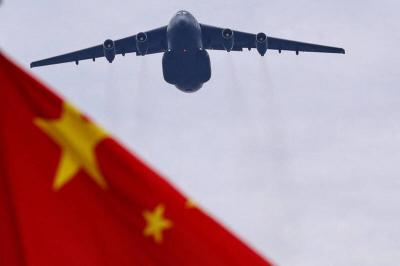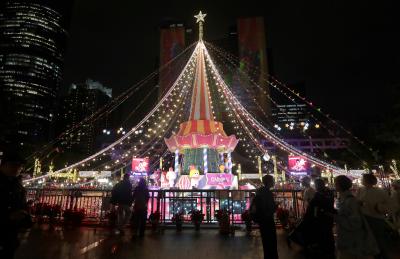The submarine-launched harpoon missiles now being added to Taiwan’s military arsenal add a “new and important level of risk for a Chinese invasion force” an American expert said on Friday.
Delivery of the sea-skimming supersonic missiles with a range of about 125km was revealed this week by the Ministry of National Defense.
The sale has been in process since 2005 and was announced to the US Congress, as required by law, in 2008. However, it was not previously known that delivery was underway.
“Though this sale started during the Bush administration, it is also consistent with the Obama administration’s more recent interest in helping Taiwan improve its asymmetric military capabilities against attack from China,” International Assessment and Strategy Center (IASC) senior fellow Rick Fisher said.
Taiwan has only two Hai Lung-class submarines capable of using the harpoon, but if they each carry 10, they could seriously damage up to 20 large amphibious assault ships.
“When you add these submarine-launched cruise missiles to the air-launched harpoons already equipping Taiwan’s F-16s and its new land and ship-based supersonic Hsiung-Feng anti-ship missiles, Taiwan is clearly making progress toward assembling a missile-based deterrent,” Fisher said.
Fisher said the harpoons could be “critical” for Taiwan because the new “center of gravity” for a Chinese military attack against the island would be an invasion.
“This has been the focus of Taiwan-related Chinese military modernization and expansion activities for most of the past decade,” he said.
He added that Beijing feared democracy on Taiwan more than any other external political force and remained committed to its destruction.
Taiwan should do everything it can, he said, to reduce China’s confidence in the success of a military invasion.
“It is certainly in America’s long-term interest that a free Taiwan survive and thrive, so it would be logical for Washington to enable more asymmetric capabilities for Taiwan,” he said.
Fisher said that one way would be to help Taiwan develop accurate 300km to 400km range ballistic missiles that could carry large numbers of sensor-fused munitions. These are small food-can size munitions capable of finding a ship or tank and then firing an explosively-formed molten projectile that can cut through most armor.
“They could also be used to damage or sink a hundred of the ships that China would use for an invasion of Taiwan,” Fisher said, adding that China had recently developed and deployed its own sensor-fused munitions and so there would be no issue of military imbalance.
However, in an actual battle, the use of the munitions would favor the defender — Taiwan.
“With 50 missiles carrying 20 sensor-fused munitions each, Taiwan could threaten 1,000 Chinese invading platforms,” Fisher said.

Beijing could eventually see a full amphibious invasion of Taiwan as the only "prudent" way to bring about unification, the US Department of Defense said in a newly released annual report to Congress. The Pentagon's "Annual Report to Congress: Military and Security Developments Involving the People's Republic of China 2025," was in many ways similar to last year’s report but reorganized the analysis of the options China has to take over Taiwan. Generally, according to the report, Chinese leaders view the People's Liberation Army's (PLA) capabilities for a Taiwan campaign as improving, but they remain uncertain about its readiness to successfully seize

Taiwan is getting a day off on Christmas for the first time in 25 years. The change comes after opposition parties passed a law earlier this year to add or restore five public holidays, including Constitution Day, which falls on today, Dec. 25. The day marks the 1947 adoption of the constitution of the Republic of China, as the government in Taipei is formally known. Back then the Chinese Nationalist Party (KMT) governed China from Nanjing. When the KMT, now an opposition party in Taiwan, passed the legislation on holidays, it said that they would help “commemorate the history of national development.” That

Taiwan has overtaken South Korea this year in per capita income for the first time in 23 years, IMF data showed. Per capita income is a nation’s GDP divided by the total population, used to compare average wealth levels across countries. Taiwan also beat Japan this year on per capita income, after surpassing it for the first time last year, US magazine Newsweek reported yesterday. Across Asia, Taiwan ranked fourth for per capita income at US$37,827 this year due to sustained economic growth, the report said. In the top three spots were Singapore, Macau and Hong Kong, it said. South

Snow fell on Yushan (Jade Mountain, 玉山) yesterday morning as a continental cold air mass sent temperatures below freezing on Taiwan’s tallest peak, the Central Weather Administration (CWA) said. Snowflakes were seen on Yushan’s north peak from 6:28am to 6:38am, but they did not fully cover the ground and no accumulation was recorded, the CWA said. As of 7:42am, the lowest temperature recorded across Taiwan was minus-5.5°C at Yushan’s Fengkou observatory and minus-4.7°C at the Yushan observatory, CWA data showed. On Hehuanshan (合歡山) in Nantou County, a low of 1.3°C was recorded at 6:39pm, when ice pellets fell at Songsyue Lodge (松雪樓), a